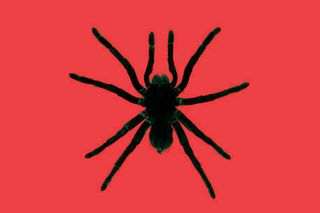
Understanding Phobias: What They Are and Why They Happen
Phobias develop either due to genetics, unpleasant past experiences, or because a part of the brain malfunctions.

I’m petrified of heights. I don’t even have to be on the top floor of a more than five- to six-storied building to feel scared — just the thought of it makes my feet sweat and my body tremble. What I have is a phobia of heights, called acrophobia — which one can have even if they are not high up.
A phobia, as defined by Harvard Health, is, “a persistent, excessive, unrealistic fear of an object, person, animal, activity or situation.”
The American Psychological Association (APA) divides it into three broad categories. The first kind, known as specific phobias, is an irrational fear of a specific trigger – think tomatoes, horses, ceiling fans, spiders, snakes.
The second type is social phobia, or social anxiety, which Medical News Today defines as a “profound fear of public humiliation and being singled out or judged by others in a social situation.”
The third type is known as agoraphobia, or fear of situations that would be difficult to escape if the person were to panic — like my fear of heights. Or take, for instance, my 83-year-old grandmother, who still prefers taking the staircase to an elevator because she fears being trapped in it. Another example is people avoiding using public transport because they are scared of being in a heavily crowded place.
The National Institute of Mental Health has stated that more than 10 million adults in the U.S. suffer from at least one sort of phobia, however, there is no India-specific data available on how many people live with phobia.
Yet, what causes one to develop any kind of phobia is a topic that is under continuous research. Currently, there are three possible explanations: it could be due to the malfunction of a certain part of the brain, due to genetics or due to past trauma.
However, it is safe to say that any phobia is a type of anxiety disorder, “lumped in the same class as post-traumatic stress disorder and panic disorder, among others, and anxiety disorders are, fundamentally, based on fear,” according to the APA.
Delving into how the brain could be responsible for the development of a phobia, the APA cites researchthat has found the malfunctioning of the amygdala – a small structure in the middle of the brain’s temporal lobes responsible for emotions, survival instincts, and memory — may cause one to fear something.
To explain this, APA draws from a 2003 study which found that when spider-phobic people were shown pictures of spiders, their amygdalae were more active than those in the control group, whose trigger-causing element wasn’t spiders.
Related on The Swaddle:
Where Do Childhood Fears Come From?
However, the amygdala’s link with phobia is still under research. “As soon as we know more about what is happening in the brain, then we can fine-tune treatment,” psychologist and phobia researcher Arne Öhman, PhD, of the clinical neuroscience department at the Karolinska Institute in Sweden, told Monitor on Psychology, a publication of the APA.
The chances that phobias are a result of one’s genes ranges between 25% and 65%, “although we do not know which genes have a leading part,” according to Katherina K. Hauner, a postdoctoral fellow at the Northwestern University Feinberg School of Medicine, as reported in
Scientific American. “No specific phobia gene has been identified, and it is highly unlikely that a single gene is responsible. Rather, variants in several genes may predispose an individual to developing a number of psychological symptoms and disorders, including specific phobia.”
The third possible reason why people develop phobias is due to a traumatic or unpleasant experience in the past. “Even witnessing or hearing about a traumatic occurrence can contribute to its development. For instance, watching a devastating airplane crash on the news may trigger a fear of flying. That said, discerning the origin of the disorder can be difficult because people tend to do a poor job of identifying the source of their fears,” explained Hauner.
What is important to remember is that while some phobias are minor, others can become severe and create anxiety-inducing situations that can come in the way of leading a normal life. Some people manage this anxiety by simply avoiding the triggers, while for those living with complex phobias — social anxiety, agoraphobia — it may not be possible to overlook the triggers. Therefore, it is advisable to seek help from mental health professionals, per Medical News Today: “Most phobias can be cured with appropriate treatment. Phobias are highly treatable, and people who have them are nearly always aware of their disorder. This helps diagnosis a great deal.”
Anubhuti Matta is an associate editor with The Swaddle. When not at work, she's busy pursuing kathak, reading books on and by women in the Middle East or making dresses out of Indian prints.
Related


Women Who Face Sexism Are Three Times More Likely to Suffer from Poor Mental Health
